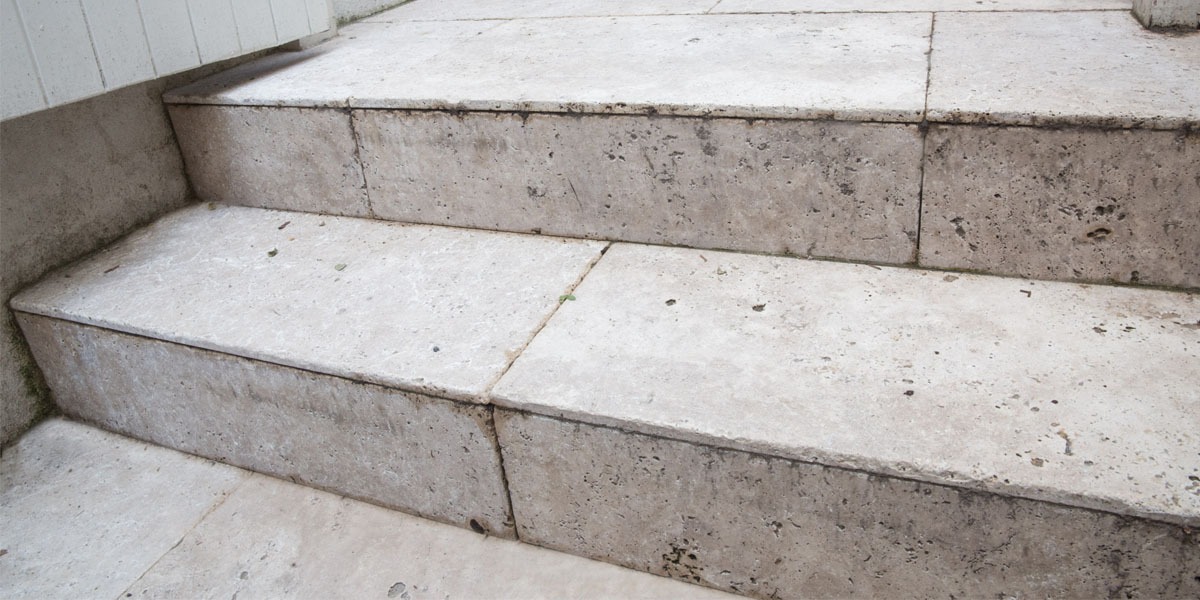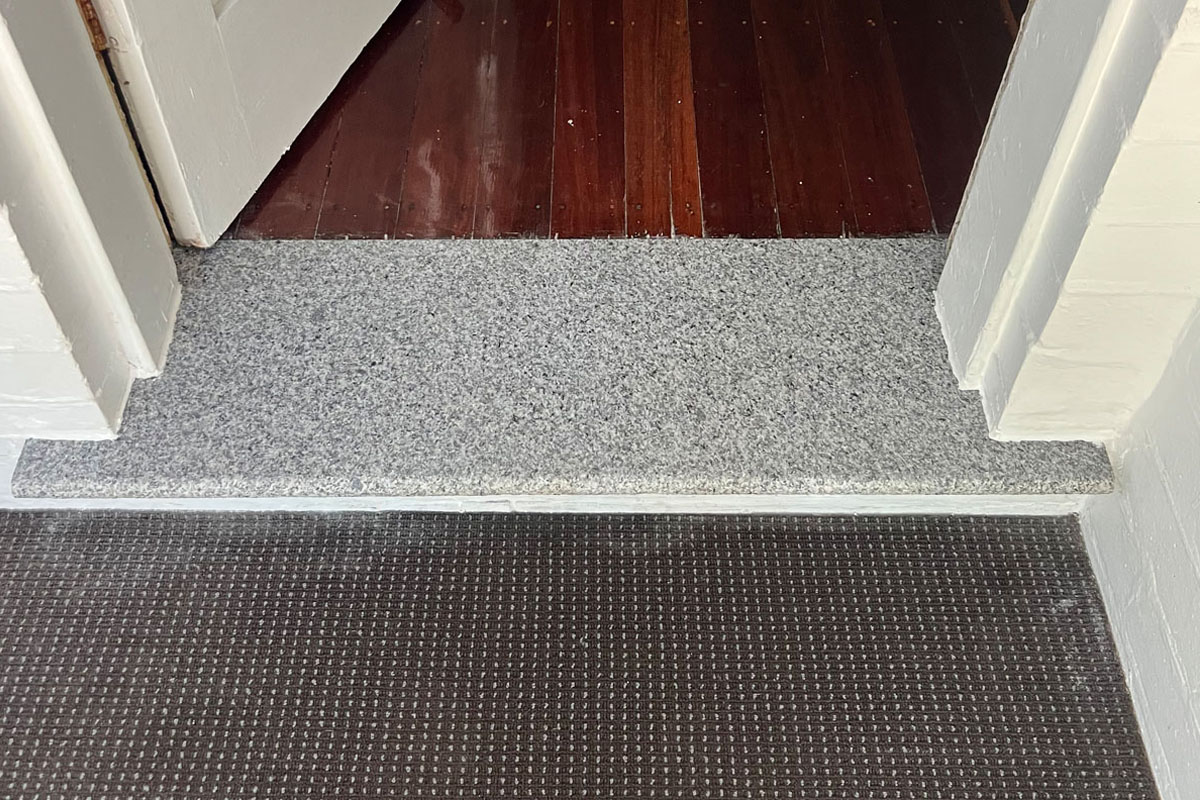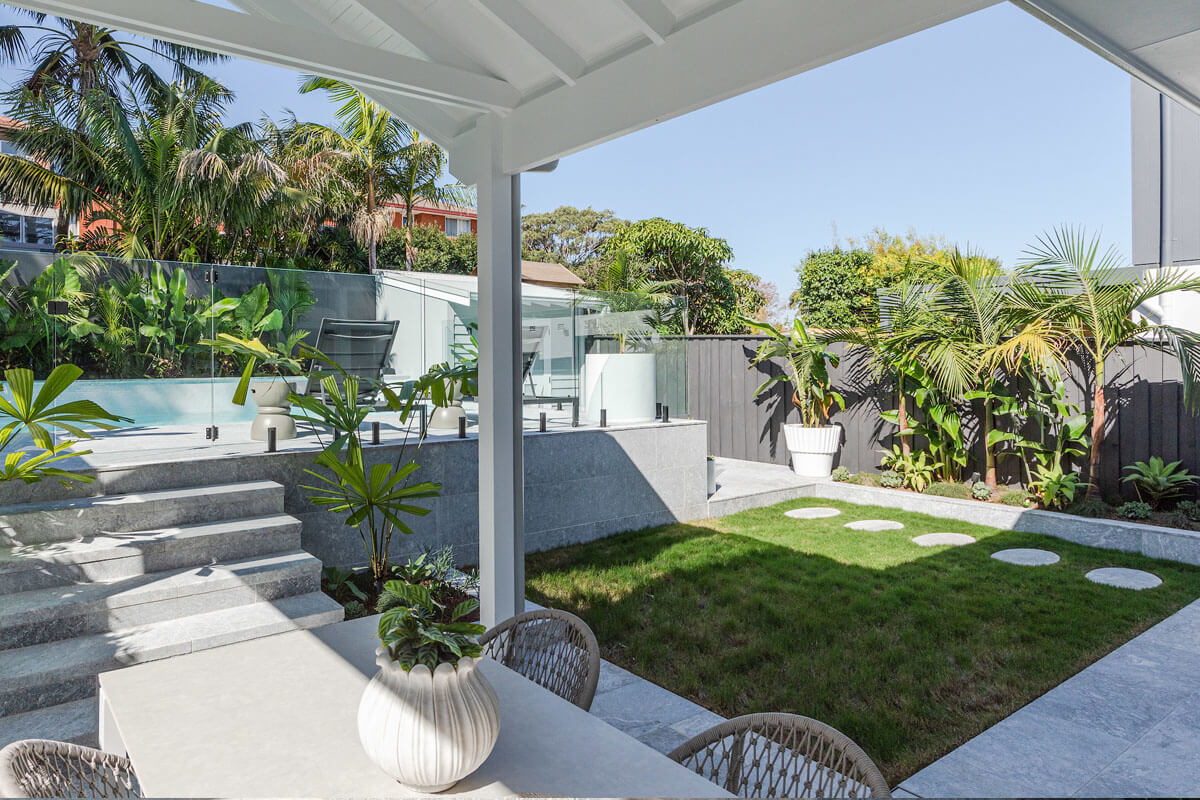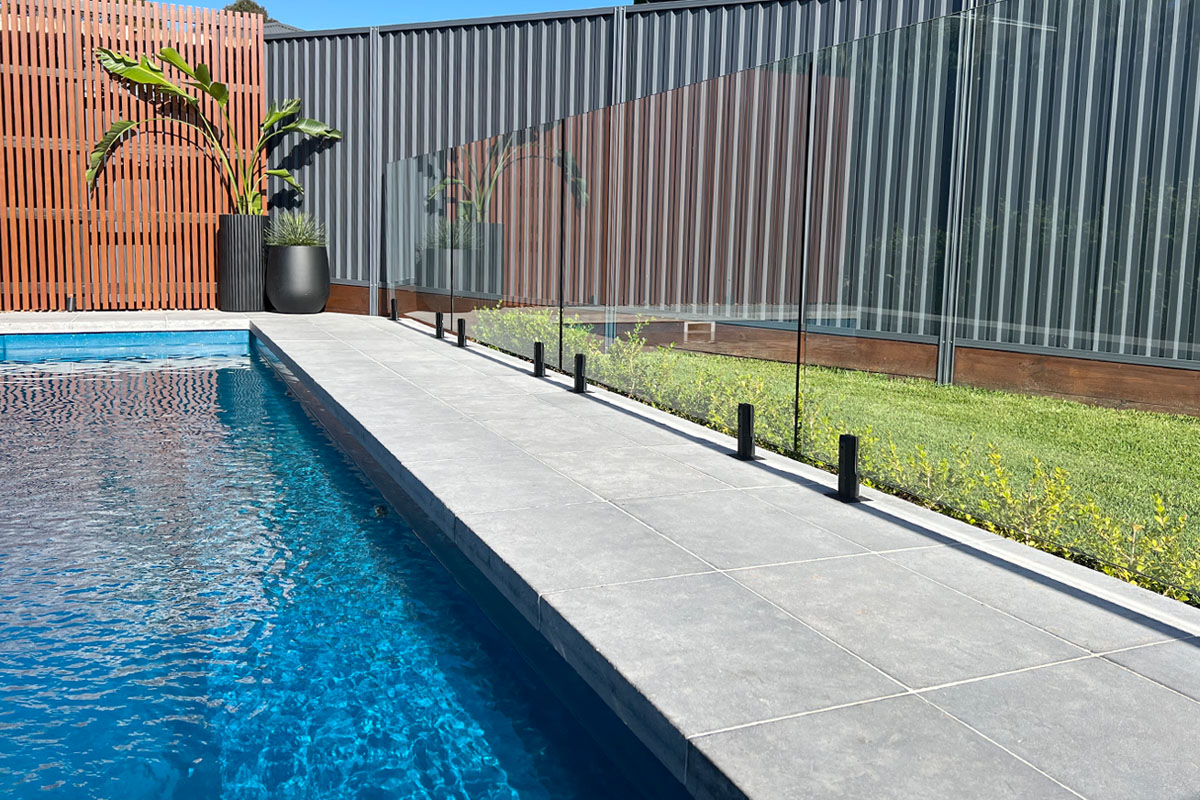Warning: Don’t use Travertine Pavers Around the Pool before reading this Article
Our headline is loaded and intriguing and you’re probably wondering:
“But why aren’t tumbled travertine pavers suitable for installation around the pool?”
Good question!
We would love to answer it for you.
There are three major reasons why tumbled travertine pavers aren’t suitable for installation around the pool.
Before we dive head first into these.
We would love to introduce ourselves so that you know that we aren’t just a character blogger who is regurgitating content.
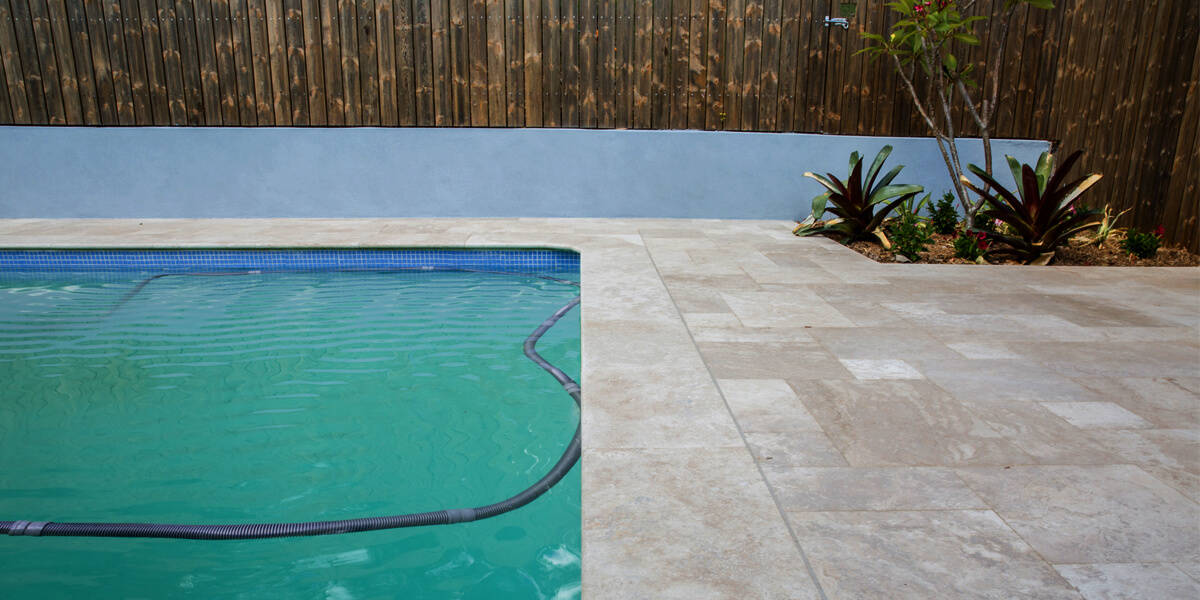
In the past 10 years, Armstone has become one of Sydney’s high-end natural stone suppliers.
Situated in Glebe, we are passionate about supplying you with the best quality pool pavers that transform your outdoors and bring you and your family, joy and happiness.
We love to guide our customers to make the best decision that is perfectly tailored for their project.
We have worked on thousands of multimillion-dollar homes and commercial projects.
Working closely with pool builders, architects and landscapers alike.
We have learnt a few tricks of the trade about how to create attractive natural stone designs.
All the while keeping the area around your pool safe and practical for your entertainment and enjoyment.
Over the years we have received 5 star rated feedback from our lovely clientele.
Making us one of the best stone suppliers in our niche-industry.
Now, let’s get back to the article.
Below we will highlight the three key disadvantages of installing tumbled travertine pavers around your pool area.
If you would like more information about travertine pavers, check out our article on the 9 most frequently asked questions here.
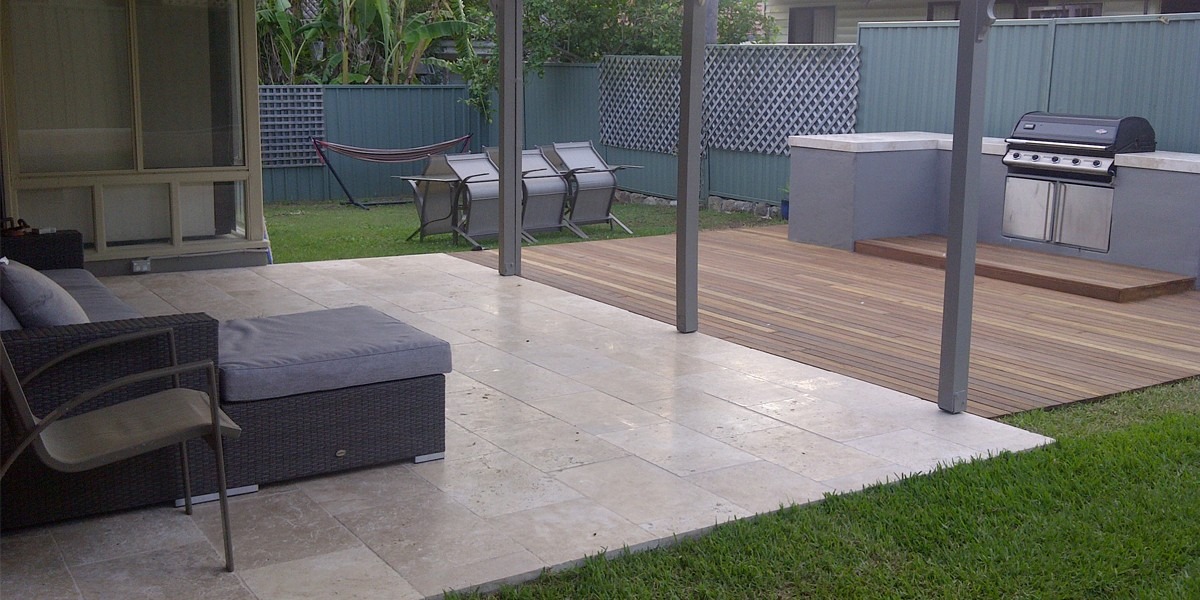
3 REASONS WHY YOU SHOULDN’T USE TUMBLED TRAVERTINE AROUND THE POOL:
-
TUMBLED TRAVERTINE PAVERS ARE SLIPPERY WHEN WET
A pool is obviously a wet area.
So in order to keep the surrounding paving as safe as possible.
It’s best to install materials that are made of non-slip surfaces.
It is recommended that these extend at least one metre from the pool.
Are graded away from the pool and installed in such a way where any water that gets onto the surface of the stone.
Drains to a waste area so that it decreases the slippage of the stone’s surface.
Ordinarily, tumbled travertine pavers can get slippery when wet.
And as such, it is not recommended for installation around the pool.
How do we know this?
We pride ourselves on testing our natural stones for safety.
To check how slippery stones are, we put them through what’s called a “Wet Pendulum Test”.
We conducted this test on “A” grade travertine pavers and noted that they had a P3 slip rating.
This is the same rating as to your indoor stone or porcelain tiles.
Which means that the stone is slippery when wet.
The Wet Pendulum slip test is where a metal boot.
With a spring-loaded rubber slider on its outsole.
Swings down onto a stone and slides across its surface.
Once the boot swings back up.
The height of the swing helps us determine the slip rating of the surface.
The more slippery the stone is, the higher the pendulum swings.
The “P” Stands for Pendulum Test.
And its rates range between P0 – P5 (see table below for more information).
When choosing a paver for your pool surrounding.
It’s important to understand that when there is too much water on a stone’s surface.
It can naturally get very slippery.
As such, it is much wiser to choose a pool paver with a P4 or P5 slip rating.
These ratings show that the stone has a better grip than a stone with a P3 rating.
For example, while having fun in the sun, excited children tend to run around the pool.
If the stone’s surface has a P3 rating.
It can be tough to keep your balance and a small slip can result in devastating injuries.
Yes, adults included.
P4 or P5 ratings will give you the confidence and peace of mind that your pool paver is safe for everyone to enjoy.
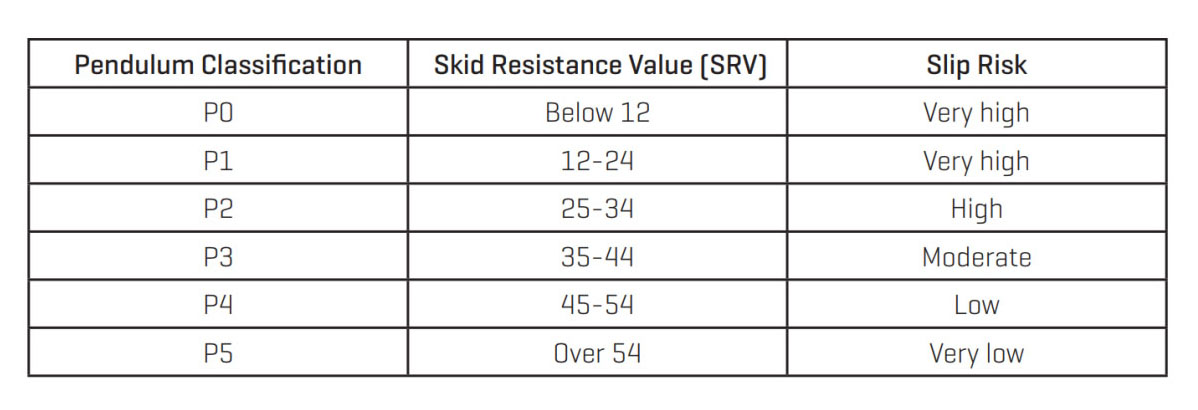
-
TRAVERTINE MAY CONTAIN PITTING THAT TRAPS DEBRIS
One of the characteristics of travertine tumbled pavers.
Is the various sized holes throughout its surface.
This isn’t a defect, but simply a unique trait of the stone.
However, these pits and holes can become quite troublesome outdoors.
Especially as debris and dirt can build up in them.
If installed near a wet area like a pool, these holes are also prone to water filling into them.
As they are hard to clean, eventually the travertine paver will have mould growing in it.
Meticulous maintenance and care are prerequisites for travertine pavers.
For example, it’s recommended to fill these holes with an appropriate grout.
However, this adds additional labour and material cost.
Which coupled with the additional maintenance time, is not always an ideal situation for many homeowners.
If you are keen to learn how to grout travertine pavers, follow this link and read the answer to question 9.
-
TUMBLED TRAVERTINE PAVERS USED AS A COPING CAN CUT OPEN YOUR SKIN
Aside from being super slippery and full of tiny holes that require additional maintenance and care.
Travertine pavers are actually one of the more economical natural stone pavers on the market.
Which is why many people use tumbled pavers as pool coping.
However, to cut costs, they do not purchase the tumbled travertine in an appropriate bull-nosed or pencil-rounded edge.
And this is necessary for pool coping.
You are probably thinking: why not?
Well, many have a preconception and belief that tumbled travertine pavers have a rumbled edge that is “suitable” for pool coping.
As such, they think this cost-cutting method can help them “get away” with using the pavers.
Rather than getting the correct bull-nose, pencil-rounded or drop edge necessary for pool coping.
Like we mentioned in the second point, travertine has naturally occurring holes throughout it.
This is true of its surface and its edges as well.
It is also impossible to source travertine pavers with smooth edges.
Why is this important for pool surroundings and pool coping purposes?
Well, if you run your hand (or foot) over the edges of travertine pavers.
The holes can be so sharp, that they can cut your skin open.
Now imagine you are trying to pull yourself out of the pool.
You grab onto the edge of the travertine paver and cut yourself because the stone is slippery when wet.
And the little holes are sharp as well.
Now you’re injured and the pool is full of bloodied and contaminated water.
We are always amazed at how many consumers close their eyes to this detail.
And even more astounded by how some shady-stone suppliers will never tell you about this, just to close a sale.
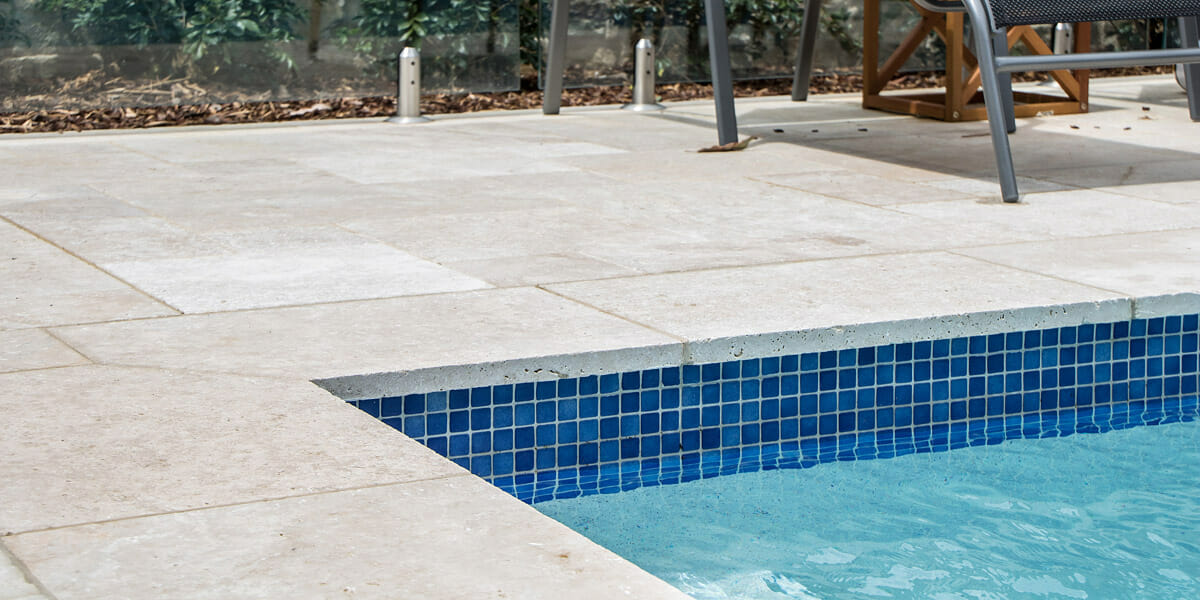
To know more here is a video with frequently asked questions about travertine pavers:
Conclusion
Tumbled travertine is a beautiful natural stone.
However, it’s best to avoid installing it in an outdoor area that is susceptible to water.
This is because it can be slippery when wet and cause unnecessary injuries.
When installing pool paving, safety is the first priority.
There are many beautiful pavers that are safe and aesthetically pleasing.
If you want to learn more, check out our article where we share 5 tips on how to choose pool pavers and pool coping.
In case you need any help or guidance finding the right natural stone for your pool paving or coping.
Reach out to us at Armstone and one of our experts will guide you in the right direction.
PS. Below video will help you understand why is it important that your trusted stone suppler works closely with Installer.
